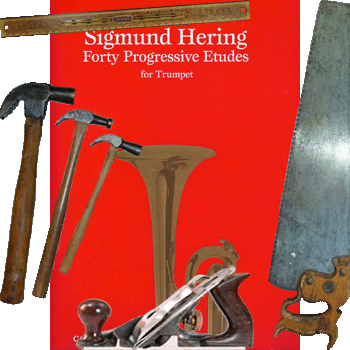|
Below is information on Sigmund Herring's Forty Progressive Etudes. In addition to some basic notes on performance, each entry includes a rendition of the etude as performed by Drew Fennell. Students may use these demonstrations as a model for preparation of lesson material. More content will be added over time.
Etude #21
Demonstration
The tempo of this etude should be fairly brisk. The student should note that there are no staccatos throughout the entire piece, so the eighth notes should be played legato/tenuto. When there are downward octave jumps, the student should take care to give more weight to the bottom note so that it projects evenly with the higher octave; otherwise, those notes will tend to disappear.
- Allegretto [It.]: Slightly slower than allegro; medium fast.
Etude #22
Demonstration
In preparing this etude, care should be given to proper articulation, slurring the couplets (two slurred notes) and lightly tonguing the staccato notes. These should not be too short.
- Allegro [It.]: Merry, lively, fast.
Etude #23
Demonstration
The overall mood of this should be somewhat subdued. This means the timbre of the tone should be "darker" and "rounder" - less "edgy." The phrasing should be carefully observed, and the student should allow the melody to "breathe" - growing and diminishing with each crescendo and diminuendo.
- Moderato [It.] Moderate tempo.
Etude #33
Demonstration
The marking at the beginning is grazioso, meaning "gracefully." The eighth notes should be played fairly long, but perhaps not (strictly speaking) full length. The student should do his or her best to glide effortlessly over the sixteenth note passages.
- Grazioso [It.]: Gracious, graceful.
return to Workshop Home
top of page
Copyright © 2003, 2004, 2005, 2006, 2007, 2008, 2009, 2010 Drew Fennell
International Copyright Secured All Rights Reserved
|
